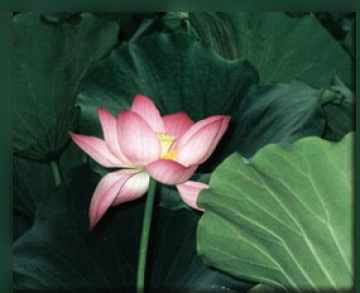
What is Vipassana?
Vipassana is one of two main categories of Buddhist meditation, and means ”insight” in the Pali language of the Buddhist texts. It is a kind of meditation, found in the Theravada tradition, that aims at an understanding of dukkha or ”suffering,” anicca or ”impermanence,” and anatta or ”not-self.” The Theravada tradition is based on the teachings of Buddha as found in the earliest texts.
Pronounced va-PAH-shana, this meditation approach was probably discovered by Gautama Buddha, 500 years before the birth of Christ. Although the practice of Vipassana faded for the most part after the seventh century, a Burmese businessman, S. N. Goenka, visited a monastery in the 1950s where it was still practiced by a small group of monks. He was so impressed with this meditation technique that he introduced Vipassana to prison inmates and helped spread the practice around the world.
Vipassana meditation differs from Samatha, which is the second main category of Buddhist meditation and is translated as ”concentration.” In Samatha, the mind focuses on one item, such as prayer, a chant, a flame, or a religious image, and excludes all other thoughts. But the rapture that results from Samatha meditation is supposedly temporary and disappears after the meditation, while Vipassana meditation is said to lead to a permanent state of liberation.
Buddhists in South and Southeast Asia practice this 2500-year-old tradition. Vipassana is also called ”Insight meditation” because the purpose is to give the meditator an accurate understanding of the nature of reality. It helps us explore the deepest levels of the mind, and offers direct access into the spiritual realm without addressing deities or spirits.
Why Practice Vipassana Meditation?
Vipassana meditation is a transformative experience that changes our character by helping us become keenly aware of the things we say and do. It helps us to develop intuition, reduces tension and fear, and moderates passion. Through a diligent practice of meditation, we can learn to diminish and dispel illusion, cravings, ignorance, and greed. By watching the mind in a detached manner, the meditator can gain insight into his or her own behavior, and cultivate mindfulness and intense awareness of the inner workings of all things. Although relaxation and concentration are components of meditation, Vipassana seeks another goal: awareness of one’s true self.
Everyone can benefit from this practice, which teaches the meditator how to go beyond the conscious mind by allowing the deeper mind to offer solutions. It helps free us from illusion, so that we can look at ourselves with greater clarity and make appropriate changes in our lives. It also helps us become aware of the depth of selfishness that can motivate actions that are thought to be altruistic. Vipassana meditation is a lifelong process that requires daily practice, discipline, and patience.
How to Learn Vipassana Meditaiton
The Goenka-style courses in Vipassana are taught in 10-day retreats (see the Dhamma website.) There is no charge, but those who have completed the course generally make a donation in the spirit of world service.
The essence of these retreats involves the total absence of all distractions. Attendees agree not to talk, make contact, or otherwise communicate with others — not even wives, friends, or family members — for the duration of the experience. An exception to this caveat is asking questions of the teachers when necessary, since having one’s questions go unanswered would be a distraction.
There are a number of other rules that all devolve around the concept of ”simplicity,” such as abstention from intoxicants, absence of bodily adornments, and not sleeping on a high or excessively “luxurious” surface.
Students who have taken the course once before eat nothing after midday. New students eat fruit with the five o’clock break.
All spend most of the day in meditation, beginning from 4:30 to 6:30 a.m. and ending from 9:00 to 9:45 p.m. A look at the schedule confirms that, with time subtracted for going from one place to another, a little over 10 hours per day are spent in group or solitary meditation.
Unapologetically, the teachers agree that this is all hard work — but certainly not too much to ask in return for a lifelong change in one’s consciousness.
Two of the major Vipassana techniques involve feeling one’s breath going in and out, and extending love to oneself and, progressively, to all others. Although this sounds fairly simple, it’s not easy. What’s easy is to keep doing what we have always done: worrying, harboring grudges, making judgments, thinking about the past, thinking about the future, wondering if we’re doing this correctly…
A really beautiful writing that may help you if you wish to begin Vipassana meditation can be found at ”vipassana.com” (see Beginning Insight Meditation). It was written by a woman who discovered Vipassana literally on her own deathbed (after many years, she’s now a meditation teacher and is still going strong). It is an inspiring account and offers explicit instructions for getting started.




